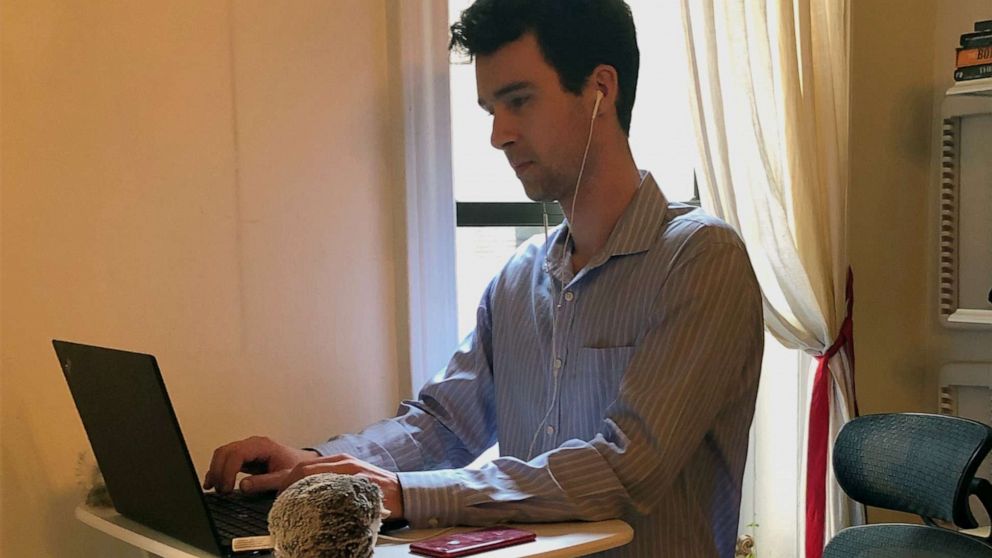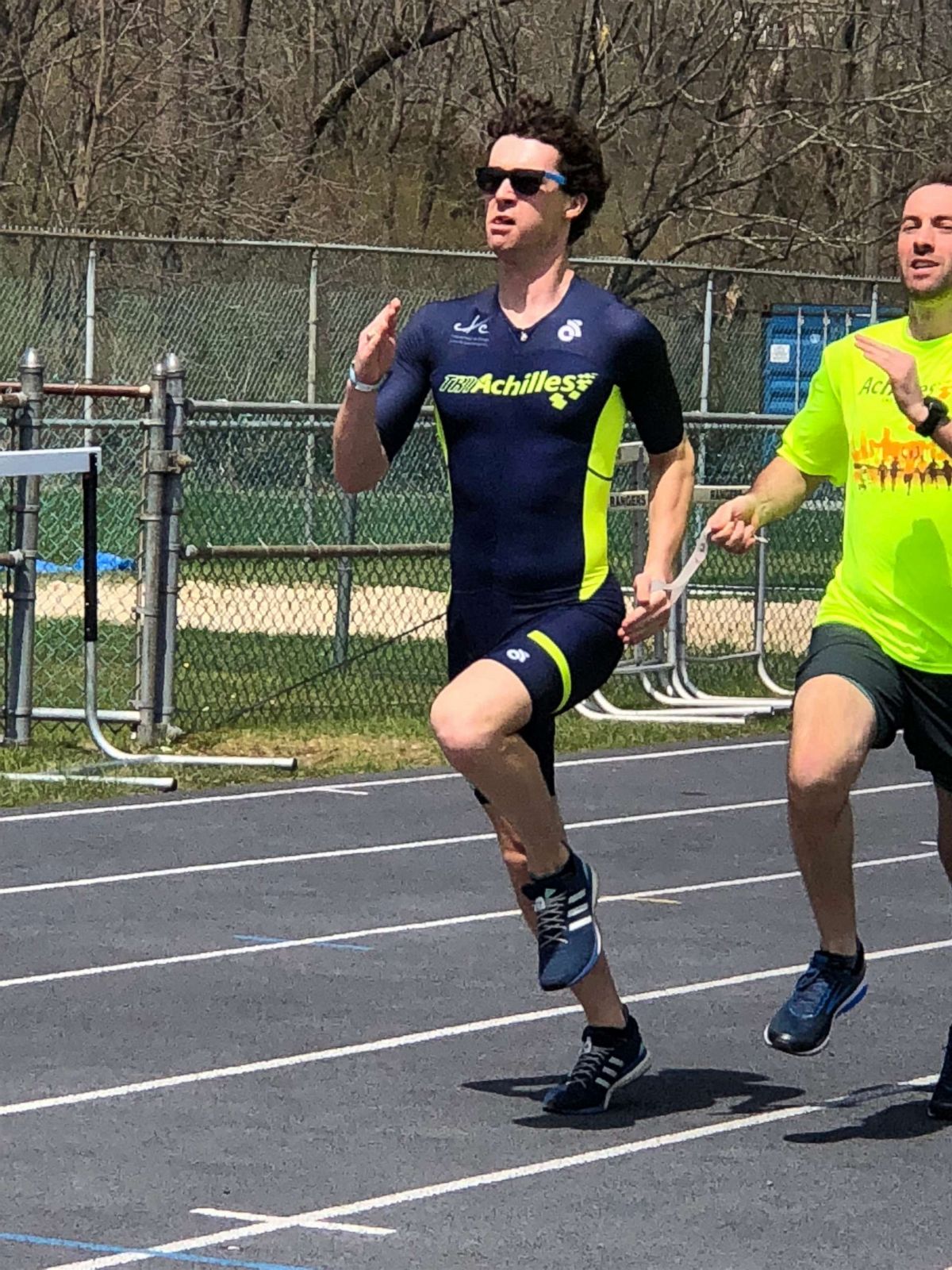Many are having to press their universities for accommodations — or drop classes entirely

It was her first in-person class, and Chaikof had set up a second laptop and a school-provided microphone near her professor and her socially distanced classmates to transcribe the conversation in real time. She squinted to read the resulting words, but even as her three classmates got out of their seats and shouted into the microphone to try to help, the transcription service picked up little.
“It’s affecting my learning. It’s affecting my ability to do well in class,” said Chaikof, whose hearing and visual impairments are caused by Usher syndrome. “Overall, it’s been really frustrating.”
Many students welcomed the return to in-person learning, but the change has revived pre-pandemic difficulties and created new ones for some students with disabilities. Some lamented the reduction of online instruction, which allowed them to read closed captions during lectures in real time, turn their cameras off when needed, and watch recorded lectures at home and at their own pace, among its benefits.
Losing that flexibility, Chaikof and others said, has brought them physical and mental distress — and the feeling that they’re being forgotten.
“I have to work 10 times harder than my classmates just to be able to succeed, and yet I’m not being supported,” Chaikof said.
American University’s sociology department, she stressed, was helpful, but the university response has frustrated her, she said. Chaikof requested an in-person transcriber for real-time captioning, she said and had spoken with the university on multiple occasions to acquire one for her required course. An American University spokesperson said the school could provide Chaikof only remote captioning services because of a shortage of in-person transcribers and a growing demand for them.

Experts estimate that 1 in 8 U.S. college students have at least one disability, according to Scott Lissner, the public policy committee chair at the Association on Higher Education and Disability. Some of those students, including those with attention-deficit-related disabilities, say they found online learning harder. But overall, the return to in-person learning presents a pervasive challenge for students with disabilities as well as for every college across the country, said Felicia Nurmsen, the managing director of employer services at the National Organization on Disability.
The challenge is heightened, Nurmsen said, in state schools that have high percentages of students with disabilities and few resources. Nurmsen said most of the universities with which she has worked are still figuring out how to increase opportunities for online classes as a disability-related accommodation.
“There is no one-size-fits-all approach to this,” she said. “Every college has students with disabilities. We all need to think about how to support our students with invisible and visible disabilities.”
Zandy Wong, a second-year neuroscience student at Johns Hopkins University in Baltimore who also has a hearing impairment, also has struggled to keep up with her classes.

She requested clear face masks for the discussion section of her calculus II class from her university’s disability services so that she could read the lips of her socially distanced instructor and classmates. But the instructor and the class stopped wearing the clear masks after a week, Wong said, and she was reluctant to self-identify as having a disability at every class meeting to remind everyone to wear them. As a result, she said, she had difficulty keeping up with the course material.
“I worry, with the transition back to in-person learning, that disabled students like me will be left behind once again,” Wong said. “The pandemic showed me that environments can be made fully accessible in a virtual or hybrid environment with little cost to the school.”
A Johns Hopkins representative said that the university has provided more online and hybrid offerings in programs that were primarily in-person before the pandemic, and that the university is considering how to use technology to make classes more inclusive and equitable.

Many universities are figuring out the same, experts said, and finding ways to make learning more equitable, including through simulations for labs, video platforms and hybrid learning tools for asynchronous learning.
“The technology has been fleshed out, and the logistics are now understood,” Lissner said. “And now there is a much larger pool of people who could benefit.” The pandemic, he added, has given students with disabilities leverage to press for more change in the educational system.
But challenges remain. At Stanford, third-year math and computational science student Poojit Hegde said online learning was a benefit for him, drastically boosting his levels of physical and mental energy every day. Hegde has chronic fatigue syndrome and received a diagnosis of postural orthostatic tachycardia syndrome, or POTS, in 2018; POTS limits his mobility and strains his health when his body temperature fluctuates.
While he was attending classes remotely, Hegde could forgo trekking across Stanford’s campus, which covers more than 8,100 acres. But since he has returned to in-person instruction, he said, he has resumed worrying about having the energy to make it to class. Normally, he would use the campus’s golf cart service, which provides transportation between locations on campus for those with disabilities or certain health conditions at the university. But Hegde said he has had a hard time getting to use that facility this year because of increased demand. A Stanford spokesperson said the university increased the staffing of the transportation service at the beginning of the academic year because ridership had climbed from four passengers daily last school year to 50 a day this fall.
In September, one of Hegde’s classes spontaneously decided to meet outside in the early afternoon when it was 80 degrees, and he was not prepared. Normally, he said, he would have brought a cooling vest, a portable fan and water.
“By the end, I really regretted going to class. It impacted the rest of my day and the day after,” Hegde said. “Because my disability is invisible, if I don’t advocate for myself enough, people won’t listen to me.”

Liza Mamedov-Turchinsky, a senior at the University of California at Berkeley who has completed six years for her undergraduate degree, said she had to drop half her courses this year because she did not want to take any in-person classes. Mamedov-Turchinsky, who is studying rhetoric and anthropology, is immunocompromised and has chronic fatigue syndrome, chronic pain disorder, asthma and ADHD.
A Berkeley spokesperson said students with disabilities are allowed to participate remotely if doing so does not fundamentally change the nature of the courses involved. In addition, if remote learning is not an option, the university will work with the students to find appropriate accommodations.
But Mamedov-Turchinsky’s department is small and did not offer many virtual courses, she said, and her request could not be accommodated. As a result, partly to avoid the threat posed by the novel coronavirus, she will have to take another year or possibly two to graduate.
“I can’t choose between my life and my degree. It’s a very difficult position for me to be in,” she said. “What’s been the most painful and heartbreaking about the pandemic is seeing that the world, at the flip of the dime, was able to restructure itself when it came to abled people needing those accommodations. And now it’s become even more difficult to be an equal among my peers.”
Alex Chand, a fifth-year Lawrence University student of physics and English who has autism, said she enjoyed Zoom learning because she felt she could understand social cues better: She did not need to ask others to join their groups because the professor could automate breakout rooms, she could easily leave her hand raised in the queue, and she generally felt less anxious to attend class.
Returning to in-person learning on the campus in Appleton, Wis., has been stressful, Chand said, because she has had to put in far more energy to fight for accommodations. She saw a psychiatrist this fall for medication to help with her anxiety.
“For a while after returning to campus, I was afraid to leave my room,” Chand said. “It’s been really stressful for me, because it’s hard to decode what’s being said in between the lines.”
Barbara Hong, the dean of Texas A&M International University’s University College and a professor in special education, suggested that the difficulties that students are facing could have been avoided if schools considered reopening in smaller phases.
Hong recommended that instructors and administrators take this school year to reconsider how they teach and assess knowledge in the classroom.
“The pandemic has demanded faculty to be more creative and learn how to use new technology,” Hong said, “and none of this goes away.”
Article originally sourced from https://www.washingtonpost.com/education/2021/11/01/colleges-return-students-disabilities/




